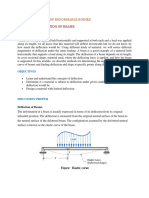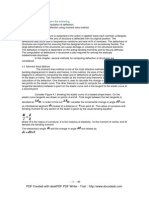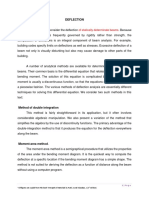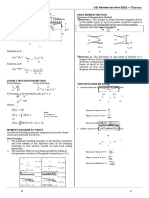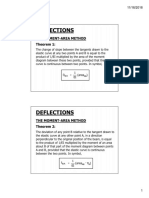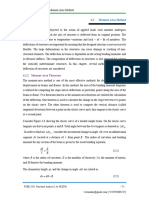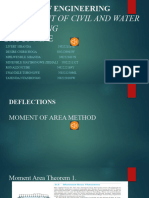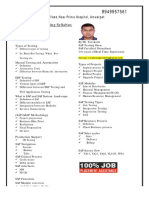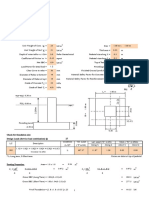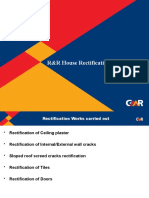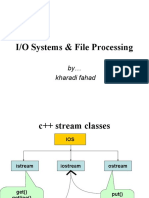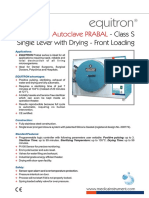0% found this document useful (0 votes)
133 views2 pagesBeam Deflection: Moment-Area Method
The moment-area method is a semi-graphical method for determining the slope or deflection of a beam at a specified location using the geometric properties of the area under the bending moment diagram. It involves dividing the bending moment diagram into simple shapes with known areas and centroids. Construction of the bending moment diagram for a simply supported beam involves calculating support reactions, introducing a fixed support, and drawing the diagram piecewise for individual loads. The method uses two theorems: 1) the change in slope between points equals the area under the M/EI diagram between them, and 2) the deviation of one tangent from another equals the moment of the area under the diagram between the points, computed about one point. Sample problems demonstrate computing
Uploaded by
Roselle RedullaCopyright
© © All Rights Reserved
We take content rights seriously. If you suspect this is your content, claim it here.
Available Formats
Download as PDF, TXT or read online on Scribd
0% found this document useful (0 votes)
133 views2 pagesBeam Deflection: Moment-Area Method
The moment-area method is a semi-graphical method for determining the slope or deflection of a beam at a specified location using the geometric properties of the area under the bending moment diagram. It involves dividing the bending moment diagram into simple shapes with known areas and centroids. Construction of the bending moment diagram for a simply supported beam involves calculating support reactions, introducing a fixed support, and drawing the diagram piecewise for individual loads. The method uses two theorems: 1) the change in slope between points equals the area under the M/EI diagram between them, and 2) the deviation of one tangent from another equals the moment of the area under the diagram between the points, computed about one point. Sample problems demonstrate computing
Uploaded by
Roselle RedullaCopyright
© © All Rights Reserved
We take content rights seriously. If you suspect this is your content, claim it here.
Available Formats
Download as PDF, TXT or read online on Scribd
/ 2







